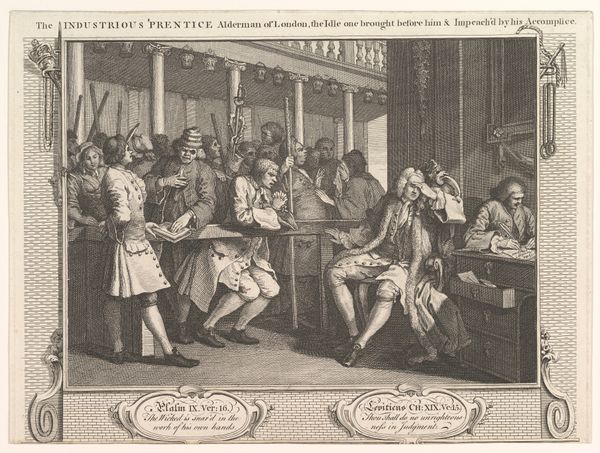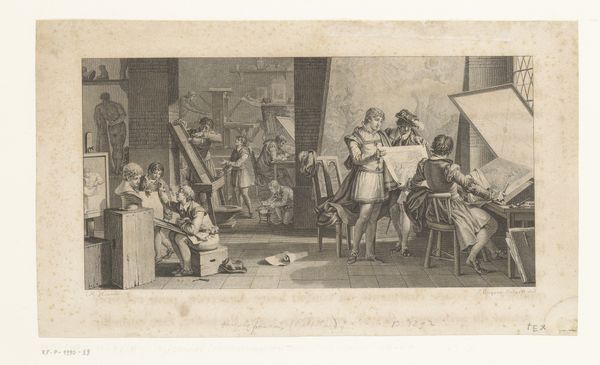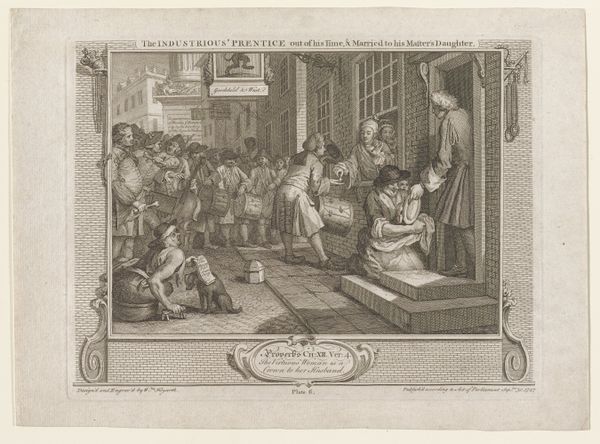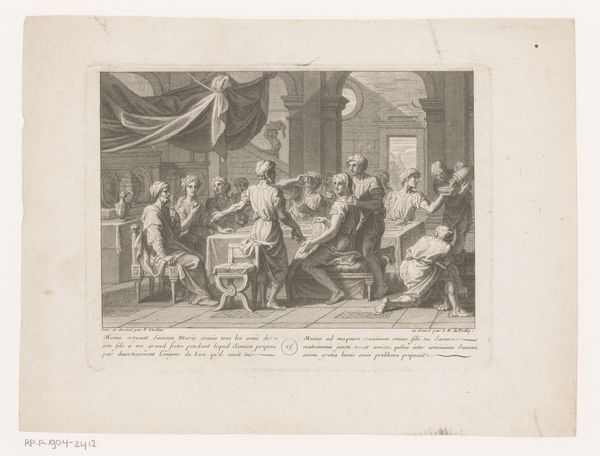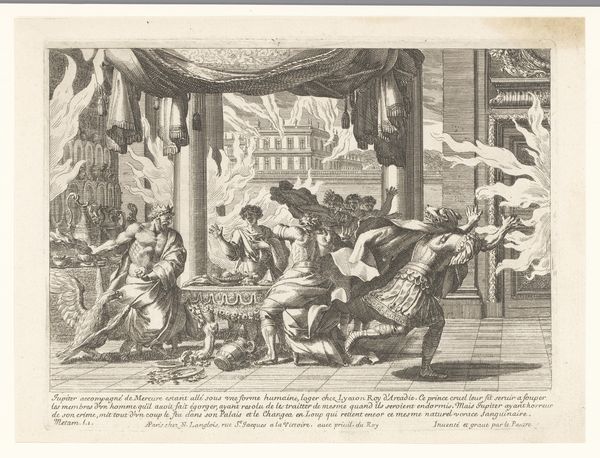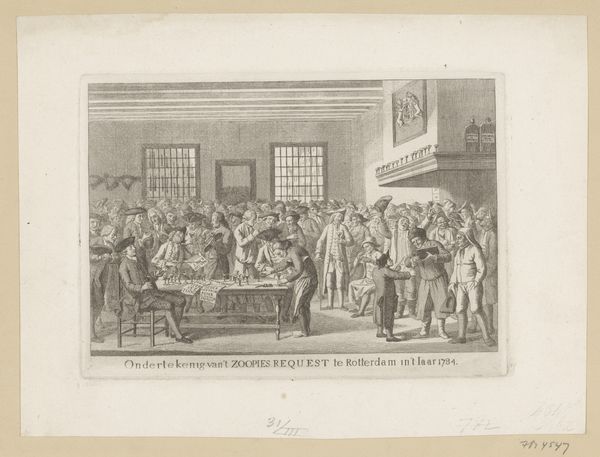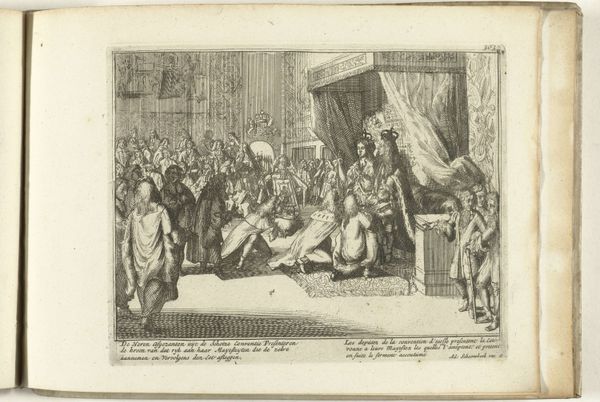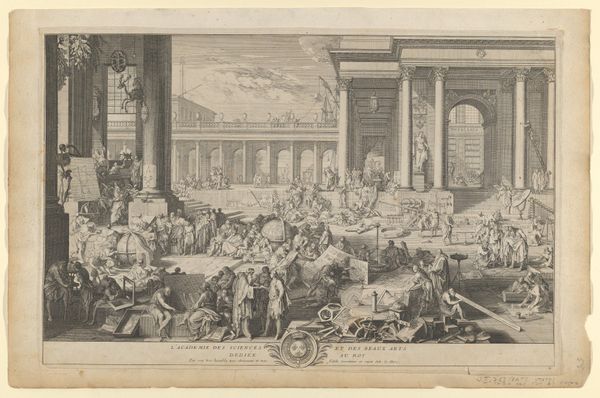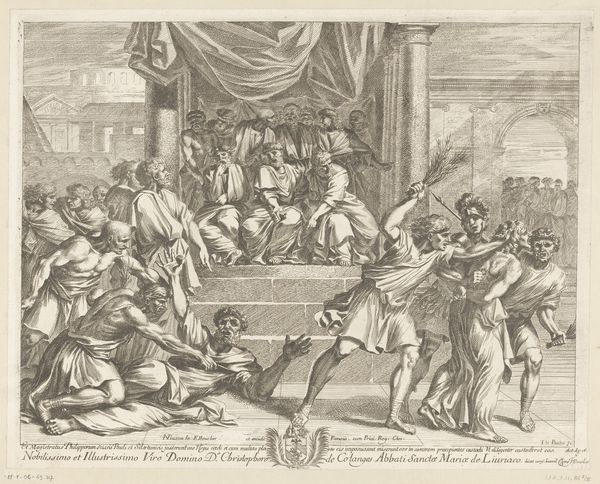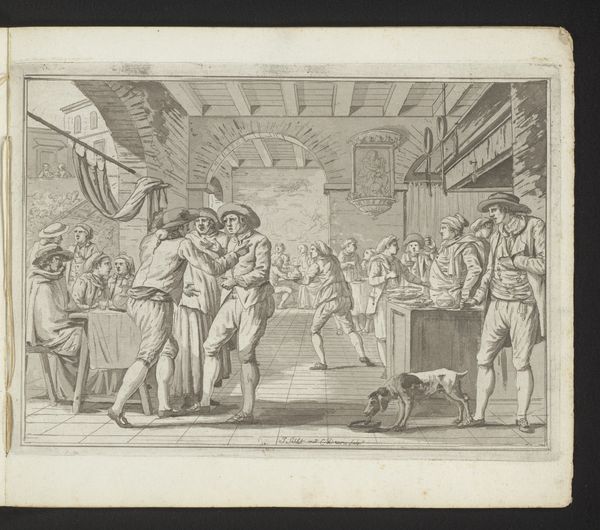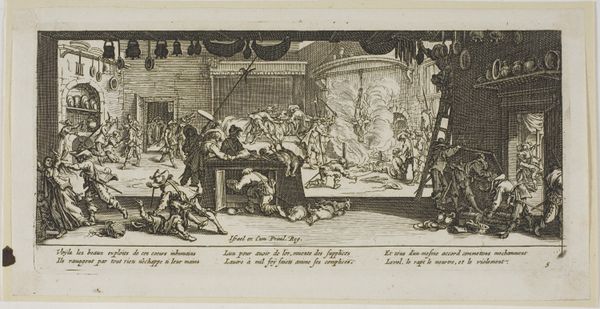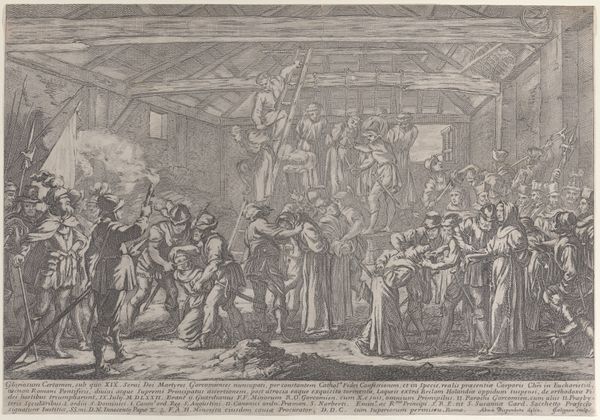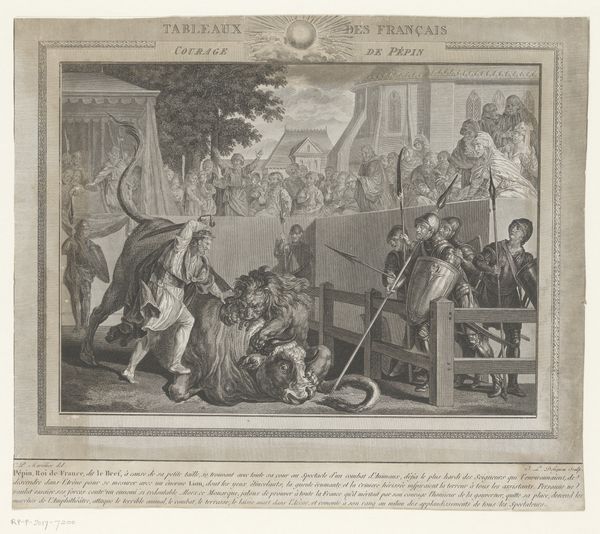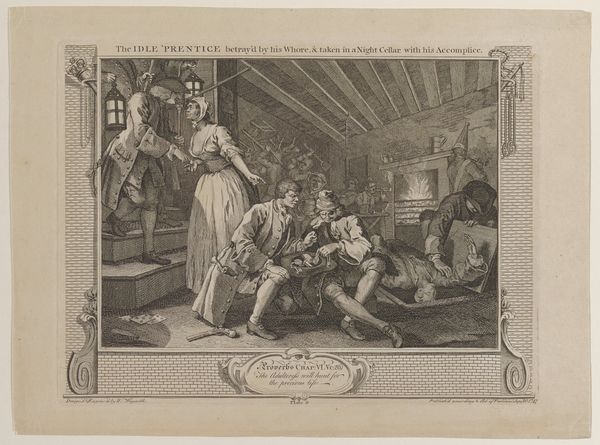
print, etching, engraving
#
baroque
# print
#
etching
#
caricature
#
caricature
#
england
#
genre-painting
#
history-painting
#
academic-art
#
engraving
Dimensions: 10 3/8 x 13 11/16 in. (26.35 x 34.77 cm) (sheet)
Copyright: Public Domain
Curator: William Hogarth's etching and engraving, "The Industrious Prentice," created in 1747, depicts a London alderman brought to justice. It's a detailed print now housed at the Minneapolis Institute of Art. Editor: Immediately, what strikes me is the sheer theatricality. It's almost like a stage setting. The accused Alderman appears distraught, overwhelmed, in sharp contrast to the figures looming behind him. Curator: Hogarth's genius was capturing social commentary within accessible formats. The very lines, etched and engraved onto the copperplate, required specific labor, tools, and the skill of a London print shop to make this morality tale available to a broad audience, not just the elite who commissioned paintings. It's part of a series, after all. Editor: And the subject matter! We see power dynamics at play – class, corruption, accountability. It brings up questions about who has access to justice and the consequences of abusing positions of authority. Note how the biblical quotes framing the image add a layer of judgment – reinforcing ideas of righteous morality versus unethical practices. Curator: Indeed, prints like this facilitated the circulation of ideas and moral instruction. We have to consider the engraver's role too—perhaps less visible than Hogarth’s, but crucial in replicating the image. The use of visual satire underscores a deep-seated concern with corruption within the structures of early modern London governance. The etching process itself is relatively quick; it suggests these prints could be made in volume for a quick turnover to meet public demand. Editor: Looking closely, there's such attention paid to the individual characters, their expressions and postures, from the central figure to the throng behind him holding staffs of authority. And you mentioned access. Think about who had the leisure, or even the inclination, to engage with such artwork. The message, wrapped in accessible visual language, hints at a societal craving for moral order amidst change. The print feels politically charged. Curator: Certainly. This piece and its methods of distribution demonstrate how printed images transformed the making and reception of art in 18th-century England. Editor: Absolutely. And it prompts us to consider the continued relevance of such images as critiques of power and reminders of societal failings – and also about societal desire for accountability and the ability to critique positions of power.
Comments
No comments
Be the first to comment and join the conversation on the ultimate creative platform.
